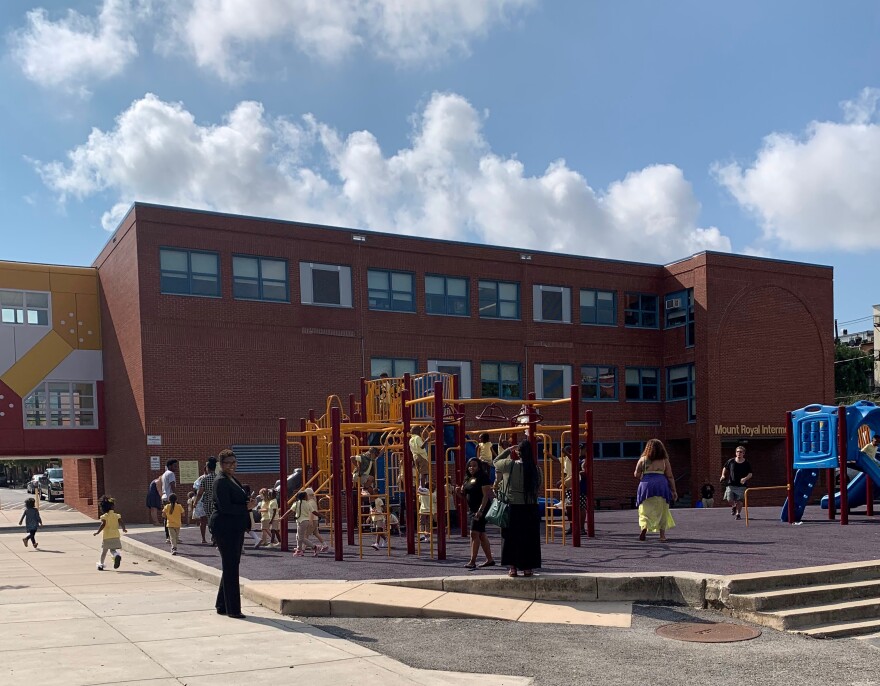As a community school coordinator, Dominique Willis’ goal is to create long-lasting relationships with community organizations.
Willis, who works at Halstead Academy in Parkville, an unincorporated community in Baltimore County, said strong partnerships ensure that students and the surrounding community always have the resources they need to thrive.
“If I was ever to fall out of this role, the school and the community could still operate without me there, and I think that’s the beauty of community schools,” Willis said.
A community school is a school model that is based on schools partnering with local organizations to provide support services to students, but also to the surrounding neighborhood and community. Resources range from tutoring, food pantries, transportation, school supplies giveaways, and social services such as health care centers, learning opportunities, workforce training, and access to mental health services.
There are 358 community schools across Maryland, according to The Blueprint for Maryland’s Future website. The education law will invest $3.8 billion in public schools each year for the next 10 years, plans to expand the model statewide.
Ellie Mitchell, executive director of Maryland Out of School Time Network said after the implementation period of the law, Maryland will be home to nearly 700 community schools.
Maryland Out of School Time Network is a local organization dedicated to increasing after-school programs in the state and ensuring that all students have access to them. The network also houses the Maryland Coalition for Community Schools, which advocates for the expansion of the strategy statewide.
Community schools are more than additional resources for students, Mitchell told WYPR.
“It's really more of a philosophical shift and how you think of what a school can accomplish and should accomplish," she said.
Mitchell also serves on the Accountability and Implementation Advisory Committee for Pillar 4 of the Blueprint focusing on More Resources to Ensure that All Students are Successful.
She said the distribution of leadership is a critical step in the community school model.
“That's the switch that actually makes your community school come together,” she said. “It’s understanding that the school does not belong to that principal or to that school district. It belongs to that community that it sits in, which is not a philosophy that everybody embraces.”
Through the Blueprint’s concentration of poverty grant, schools with more than 55 percent of students eligible for free and reduced-price meals, will receive additional funding to carry out community school initiatives. The grant is also used to hire necessary staff like full-time coordinators and health practitioners.
Mitchell is worried that the grant does not account for inflation over the course of implementation and the lack of support from the state and local governments.
While the model for community schools is mirrored throughout Maryland, support services vary based on the needs of the school and community.
A needs assessment is conducted by the school's community school coordinator.
The study consists of surveys, listening sessions and focus groups with students, parents, school administration, and staff along with community members.
Through her needs assessment at Abbottston Elementary, Berneva McClarin discovered that access to fresh food is a struggle for many families.

As the community schools coordinator, she partnered with Weekend Backpacks, a local non-profit that provides take-home meals for students.
“Families are able to sign up and it's a weekly thing. It consists of six meals, So it's enough for the scholar, as well as one, maybe two family members,” McClarin said.
At Halstead Academy, Willis partners with the Student Support Network.
Through this partnership students and families have received coats, school supplies, food, and emergency financial services.
While excited about additional community schools in the state, Willis is concerned about retaining high-quality community schools as the model expands.
“When you mass produce a lot of things you lose quality,” Willis said. “And so it's amazing to have the money and to see that community schools are being recognized. But when you start to mass produce, you really lose the good things.”








